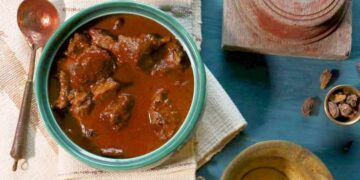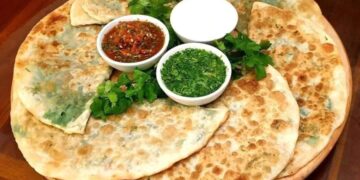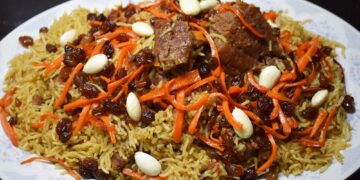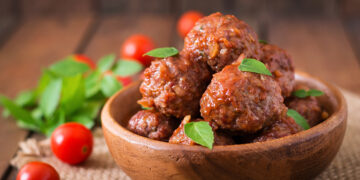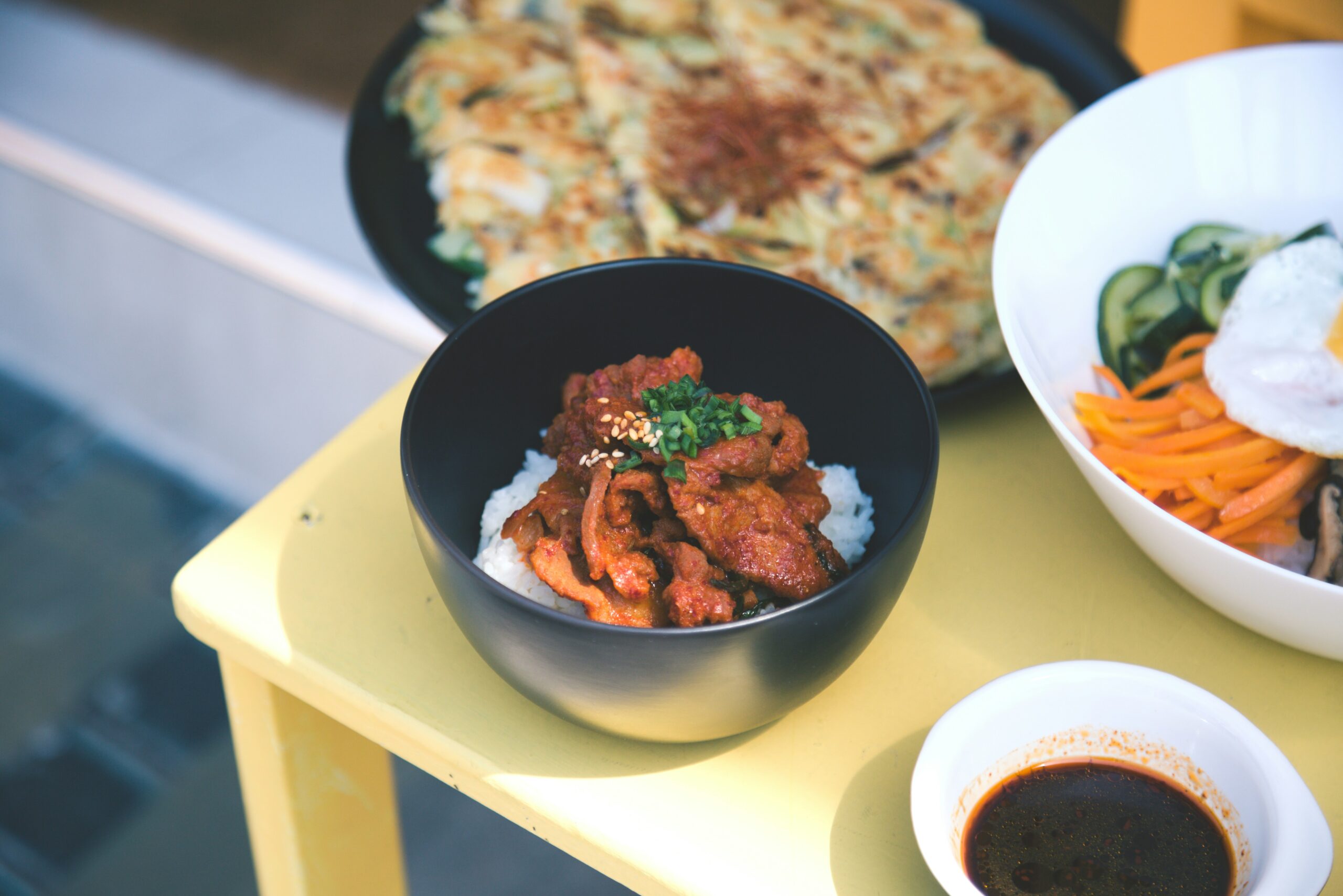Introduction to Chinese Masala Rice
Chinese Masala Rice is a fascinating culinary fusion that marries the bold flavors of Indian spices with the classic ingredients typically found in Chinese cuisine. This unique combination results in a dish that offers a tantalizing burst of flavors, making it a favorite among food enthusiasts who appreciate both Chinese and Indian foods. What sets Chinese Masala Rice apart from other rice recipes is its ability to blend these two distinct culinary traditions harmoniously, ensuring each bite is an explosion of taste.
At its core, Chinese Masala Rice includes staples like basmati rice, vegetables, and a variety of Chinese sauces such as soy sauce and chili sauce. These ingredients are then elevated by the addition of Indian spices, including cumin, coriander, and garam masala, imparting a depth of flavor that is both aromatic and spicy. This fusion not only brings together the best of both worlds but also introduces a unique texture and taste profile that is distinctive and memorable.
Beyond its intriguing flavor profile, Chinese Masala Rice has gained immense popularity among food lovers who enjoy experimenting with different cuisines. It’s common to see this dish feature prominently in fusion restaurants and home kitchens alike. Its versatility allows it to be tailored to individual preferences, whether one prefers a milder version or a spicier iteration. Additionally, Chinese Masala Rice can be easily paired with various side dishes and proteins, making it a flexible option for any meal plan.
In essence, the allure of Chinese Masala Rice lies in its creative fusion of flavors and the culinary ingenuity it represents. By combining traditional Chinese ingredients with Indian spices, this dish not only stands out but also invites a broader appreciation for the diverse ways in which global cuisines can intersect and complement each other.
“`html
Ingredients Needed
To create a delectable Chinese Masala Rice that is both flavorful and spicy, gathering all the necessary ingredients beforehand is crucial. Here’s a detailed list of what you’ll need along with specific measurements:
Main Ingredients:
• 2 cups of cooked jasmine or basmati rice (preferably 1-day old for better texture)
• 1 cup of mixed vegetables such as bell peppers, carrots, and peas, diced
• 200 grams of chicken breast, tofu, or shrimp, cut into bite-sized pieces for protein
Spices and Seasonings:
• 1 teaspoon of cumin seeds
• 1 teaspoon of ground coriander
• 1 teaspoon of garam masala
• Salt and black pepper to taste
Sauces:
• 2 tablespoons of soy sauce
• 1 tablespoon of chili sauce (adjust to taste for spiciness)
Garnishes:
• Chopped spring onions for a fresh, crunchy finishing touch
Additionally, there are optional ingredients you might consider to enhance the flavor profile:
• one tablespoon of ginger-garlic paste for a more aromatic base
• A handful of cashew nuts or peanuts for added texture
• A dash of sesame oil for a nuttier taste
Having these ingredients prepped and ready will streamline the cooking process, ensuring that your Chinese Masala Rice turns out perfectly balanced and richly flavored. Adequately measuring each component will also help maintain consistency and achieve the desired taste in every bite.
“`
Preparatory Steps
Proper preparation is key to the success of any dish, and Chinese Masala Rice is no exception. Begin by selecting high-quality rice, such as Basmati or Jasmine, which lend themselves well to the texture and flavor of this recipe. Start by thoroughly rinsing the rice under cold water to remove excess starch, which helps prevent the grains from becoming overly sticky during cooking. Place the rinsed rice in a bowl and cover it with water, allowing it to soak for at least 20-30 minutes. Soaking the rice ensures even cooking and a fluffier final texture.
Next, move on to chopping the necessary vegetables. Common choices include bell peppers, carrots, green beans, and peas, but feel free to add any vegetables you prefer. Aim for uniform, bite-sized pieces to ensure even cooking. If the recipe includes proteins such as chicken, shrimp, or tofu, take this opportunity to marinate them. A simple marinade of soy sauce, ginger, garlic, and a touch of chili paste can work wonders in infusing the proteins with flavor.
Spices and sauces form the backbone of Chinese Masala Rice, so it is essential to have them ready. Measure out your ground cumin, coriander, turmeric, and garam masala. Additionally, have soy sauce, chili sauce, and any other preferred condiments on hand. The key to a smooth cooking process is mise en place, a French culinary term meaning “everything in its place.” By ensuring all ingredients are prepared and laid out before you start cooking, you can work efficiently and avoid any last-minute scrambles.
In conclusion, careful preparation is the foundation of any delicious dish. By investing time in these preparatory steps, you set yourself up for a seamless and enjoyable cooking experience, ultimately resulting in the most flavorful and spicy Chinese Masala Rice.
Cooking the Rice
The art of cooking rice to perfection is crucial for creating a delightful Chinese Masala Rice. The journey begins with selecting the right type of rice, such as long-grain or basmati rice, which maintains its form and texture better than short-grain varieties. Rinsing the rice thoroughly under cold water is pivotal, as it removes excess starch, preventing the rice from becoming overly sticky and ensuring each grain remains distinct.
Achieving the ideal texture and consistency hinges on the correct water-to-rice ratio. A commonly recommended ratio is 1:1.5 or 1:2 depending on the type of rice and your preference for slightly firm or softer grains. For instance, long-grain rice generally requires 1.5 cups of water for each cup of rice, whereas basmati rice benefits from a 1:2 ratio.
Several cooking techniques can be employed to achieve optimal results. Using a rice cooker offers convenience and consistency, as modern rice cookers are designed to cook rice evenly and keep it warm until serving. Simply add the rinsed rice and water into the rice cooker, select the appropriate setting, and allow the machine to work its magic.
Alternatively, the stovetop method remains a classic approach favored for its simplicity and control. Start by combining the rinsed rice and water in a saucepan, and bring it to a boil over medium-high heat. Once boiling, reduce the heat, cover the saucepan, and let it simmer for about 15-20 minutes. Avoid lifting the lid too often, as it releases steam essential for proper cooking. After the water is fully absorbed and the rice is tender, allow it to rest for 5 minutes before fluffing with a fork.
For those preferring a pressure cooker, the process is equally straightforward. Pressure cookers can cut down cooking time significantly and ensure uniform cooking. Combine the rinsed rice and water, set the cooker on high pressure for approximately 5-7 minutes, followed by a natural pressure release, resulting in perfectly cooked rice.
Mastering these techniques will ensure you consistently produce well-cooked rice, forming the foundation of your flavorful and spicy Chinese Masala Rice.
Stir-Frying the Ingredients
Stir-frying the ingredients for Chinese Masala Rice is a crucial step to develop the characteristic flavors and textures of the dish. Begin by heating a well-seasoned wok or large skillet over high heat, ensuring it is sufficiently hot before adding any ingredients. A searing pan is essential for achieving the desired char and smoky flavor.
Start by adding a high smoke point oil, such as peanut or vegetable oil. Swirl the oil to coat the entire surface. Begin with proteins, whether it be chicken, tofu, shrimp, or beef, ensuring they are sliced into uniform pieces for even cooking. Season the protein with a light sprinkle of salt and pepper. Sear each piece for about 2-3 minutes per side, until a golden-brown crust forms. Remove the proteins and set aside.
Next, add aromatics to the hot pan – these often include minced garlic, grated ginger, and thinly sliced onions. Stir-fry these until fragrant, about 30 seconds to a minute, constantly tossing to prevent burning. Introduce sturdier vegetables such as carrots, bell peppers, and broccoli, which require more cooking time. Stir continuously to ensure even heat distribution and cook for about 4-5 minutes until slightly tender but still crisp.
Following the sturdier vegetables, add softer vegetables like snap peas, mushrooms, and green onions. These need less cooking time, around 2-3 minutes, to achieve the right tenderness. Lastly, reintroduce the proteins back into the pan to combine with the vegetables. Ensure everything is evenly coated with any remaining oil and juices.
Achieving the balance of a charred exterior and a tender inside is crucial. Monitor the heat level persistently; if the pan smokes too much, reduce the heat slightly. Conversely, if the ingredients are not sizzling, increase the heat. This method ensures that the Chinese Masala Rice attains its rich and flavory profile, making each bite a harmonious blend of textures and tastes.
Combining All Components
Once the rice has finished cooking and the stir-fried ingredients are prepared, it’s time to combine all components to craft the flavor-rich Chinese masala rice. Begin by heating a large wok or a deep skillet on medium-high heat. Add a bit more oil if necessary to prevent sticking and ensure that the rice and stir-fried ingredients combine seamlessly. Introduce the cooked rice into the wok, breaking up any clumps gently with a spatula or wooden spoon.
To create a harmonious blend of flavors, it’s crucial to distribute the spices and sauces evenly throughout the dish. Pour the stir-fried vegetables and protein into the wok, spreading them across the rice to cover as much surface area as possible. Gradually incorporate soy sauce, chili sauce, and any additional masala spices, drizzling them over the top. Use a tossing technique to mix the components—lift and fold the rice rather than stirring it vigorously. This method ensures even coating of the spices and sauces without breaking the delicate rice grains.
Maintain a gentle yet continuous motion, rotating the rice from the bottom of the wok to the top. Keep the heat constant but monitor closely to prevent any sticking or burning. The goal is to infuse the rice fully with the spicy masala flavors while maintaining its distinct, fluffy texture. As the ingredients become evenly combined and heated through, a vibrant color and rich aroma will permeate the dish.
For an enhanced flavor profile, consider adding fresh herbs like chopped cilantro or green onions toward the end of the tossing process. These not only lend a fresh, herbal note but also add a visual appeal with their bright green hues. Continue to toss the ingredients together for a few more minutes, ensuring every bite of your Chinese masala rice is as flavorful and spicy as intended.
“`html
Serving Suggestions
Chinese Masala Rice, a delectable fusion of flavors, benefits greatly from thoughtful presentation and accompanying side dishes. To elevate the visual allure and enhance the taste of your dish, consider garnishing with chopped spring onions, cilantro, or a sprinkling of sesame seeds. These elements not only add a burst of color but also introduce a layer of texture and subtle flavors that complement the spicy profile of the rice.
For a balanced meal, pair the Chinese Masala Rice with cooling elements such as yogurt or a simple cucumber salad. The creaminess of the yogurt acts as a cooling agent, mitigating the heat of the spices, while a cucumber salad adds a refreshing crunch. Alternatively, a selection of spicy chutneys can cater to those who prefer an extra kick, offering a spectrum of taste experiences.
When it comes to portion sizes, it’s essential to strike the right balance. For a structured meal, a portion size of about one cup of Chinese Masala Rice per person works well. If served as part of a larger spread with multiple dishes, consider offering half-cup servings to allow room for other flavors and textures.
Plating is another crucial aspect to enhance the appeal of your dish. Using wide, shallow bowls or plates can make the rice appear more abundant and inviting. Arrange the garnishes artistically on top, ensuring they are evenly distributed to create a visually stimulating presentation. For added aesthetic appeal, consider placing the sides in small, separate bowls, maintaining a neat and organized look.
Incorporating these serving suggestions not only enriches the culinary experience but also ensures that your Chinese Masala Rice is presented as beautifully as it tastes, making it a standout dish on any dining table.
“`
Variations and Customizations
The Chinese Masala Rice recipe is remarkably versatile, allowing for a multitude of variations and customizations to suit diverse preferences and dietary requirements. A vegan or vegetarian version of this dish can be easily achieved by omitting meat and incorporating a variety of vegetables such as bell peppers, broccoli, carrots, and snap peas. Tofu or tempeh also serve as excellent protein alternatives, offering a satisfying texture and flavor. For those seeking more traditional protein options, chicken, shrimp, or beef can be seamlessly integrated into the dish, adding extra depth and richness.
For individuals with different spice tolerances, the heat level of Chinese Masala Rice can be adjusted with ease. Reduce or increase the amount of chili powder, sriracha, or fresh chili peppers based on your preference. Incorporating milder ingredients like bell peppers, green beans, and sweet corn can further balance the dish for those sensitive to spice. Conversely, to elevate the heat, consider adding crushed red pepper flakes or a dash of hot sauce.
To introduce a creative twist, consider adding nuts such as cashews or peanuts, which provide an additional layer of crunch and flavor. Alternatively, explore using different types of rice, like basmati or jasmine, to alter the flavor profile and texture. The fragrant notes of jasmine rice or the unique grains of basmati can bring a fresh dimension to this already vibrant dish.
Encouraging culinary creativity, it’s important to remind readers that Chinese Masala Rice is an adaptable canvas. Whether tailoring the protein content, modifying the spice level, or experimenting with additional ingredients, there are endless opportunities to customize this recipe. Through experimentation, you can transform this delicious meal into a personalized masterpiece that reflects your unique palate and preferences.

